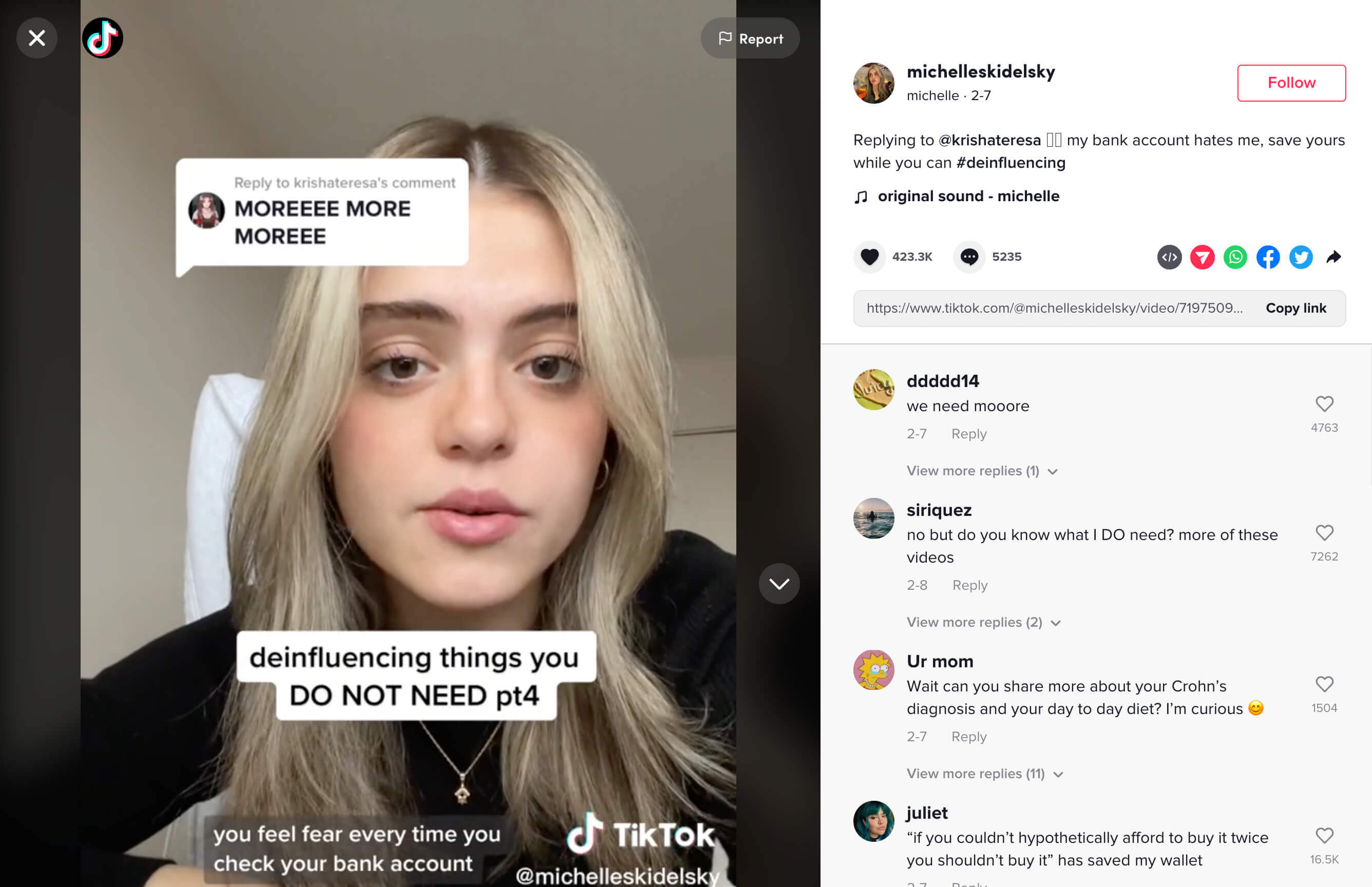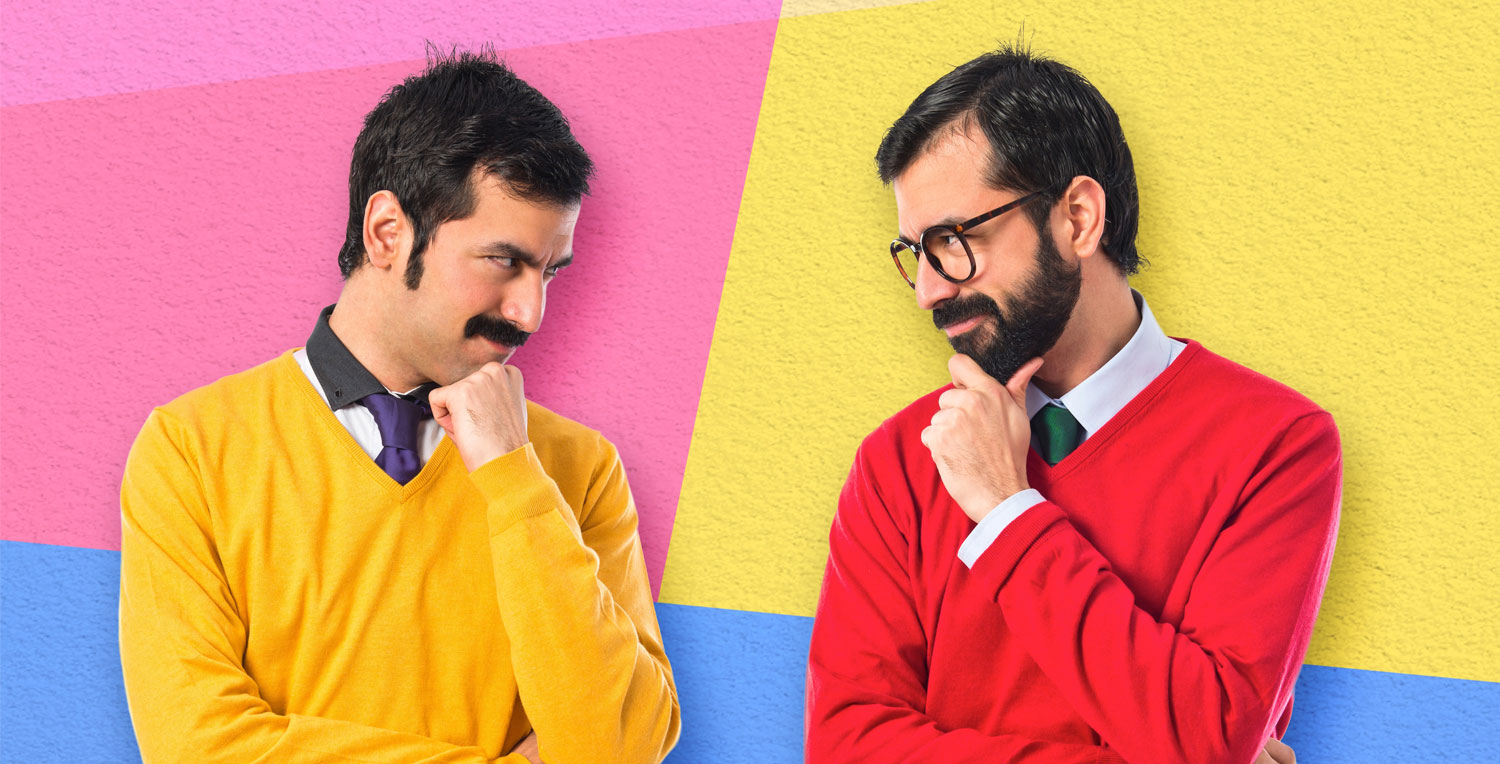Deinfluencing
Telling social media users what not to do
Example
Deinfluencing is a breath of fresh air on TikTok
They are still telling you what to do. They'll have to deactivate their social media to really start deinfluencing

Related Slang
| Deinfluencer | A social media user who pushes back against trends |
| Influencer | A social media user who affects others' behaviors |
| Sponcon | Sponsored content |
| inspo | Inspiration |
| Do it for the gram | To do something only to share on Instagram |
| Review bombing | Blasting a movie or show with negative reviews |
| Clout chaser | A person who does things just to become popular |
| Clout leech | A person who is friends with someone just to become more popular |
| Mutual | A person you follow on social media who also follows you |
| Performative activism | Advocating a cause to gain social standing |
| QOTD | Question of the day |
| Accountant | A cover-up occupation |
| Parasocial relationship | A one-way relationship between a fan and a creator |
 Take the pop culture acronym challenge
Take the pop culture acronym challenge
Deinfluencing is a trend on social media where influencers share what not to do (typically what not to purchase) with their followers. For example, an influencer may have a bad experience with a car rental service and share it with their followers, deinfluencing them to go with that service.
You will likely see deinfluencing on social sites like Instagram and TikTok. The posts often consist of a video of an influencer revealing an awful experience with a product, debunking the hype around a product, or sharing an overview of several products and outlining what not to buy.
Origin of deinfluencing
The origins of the "deinfluencing" trend are unclear, but it began in early February 2023. Some claim that deinfluencing is a direct response to the sponsored content (sponcon) influencers often push. For many Gen Zers and millennials, the influencer culture has grown stale, and they want more honest content, which includes what not to buy or try.
However, influencers still influence their followers, even if it's not to do something. This has led to some critics laughing off deinfluencing in this context.